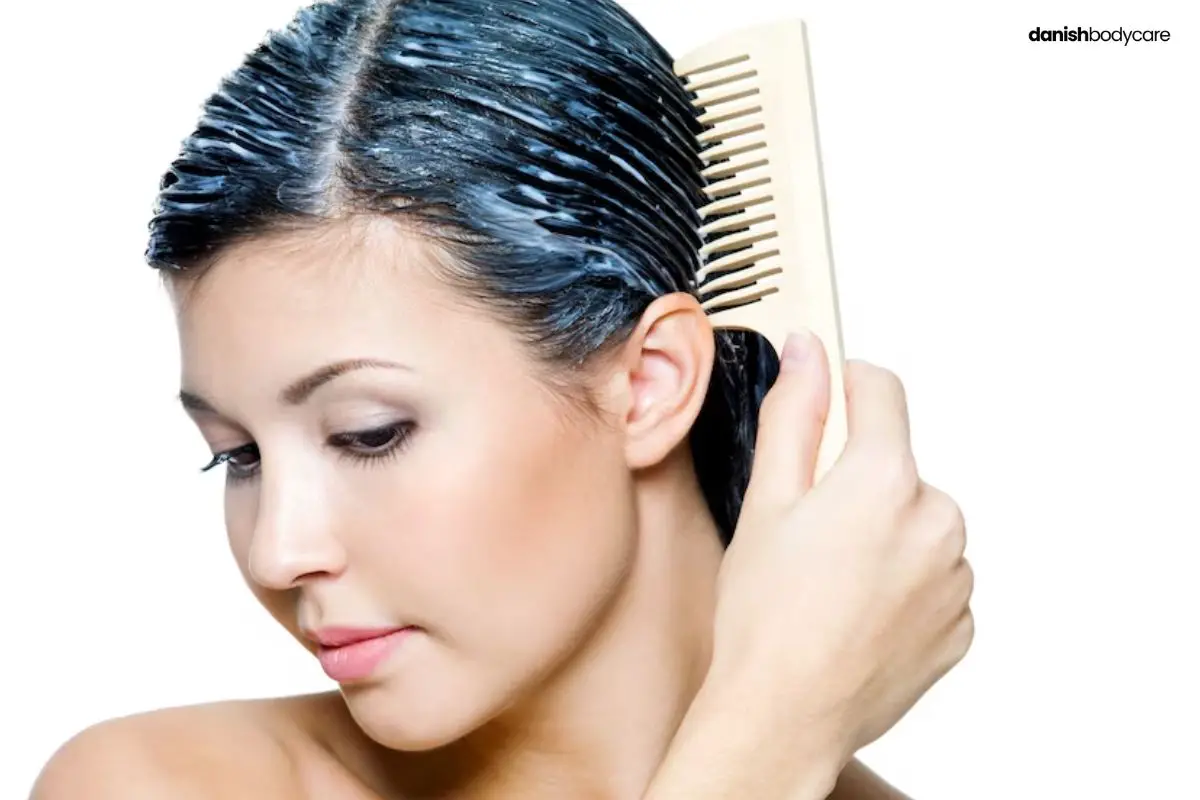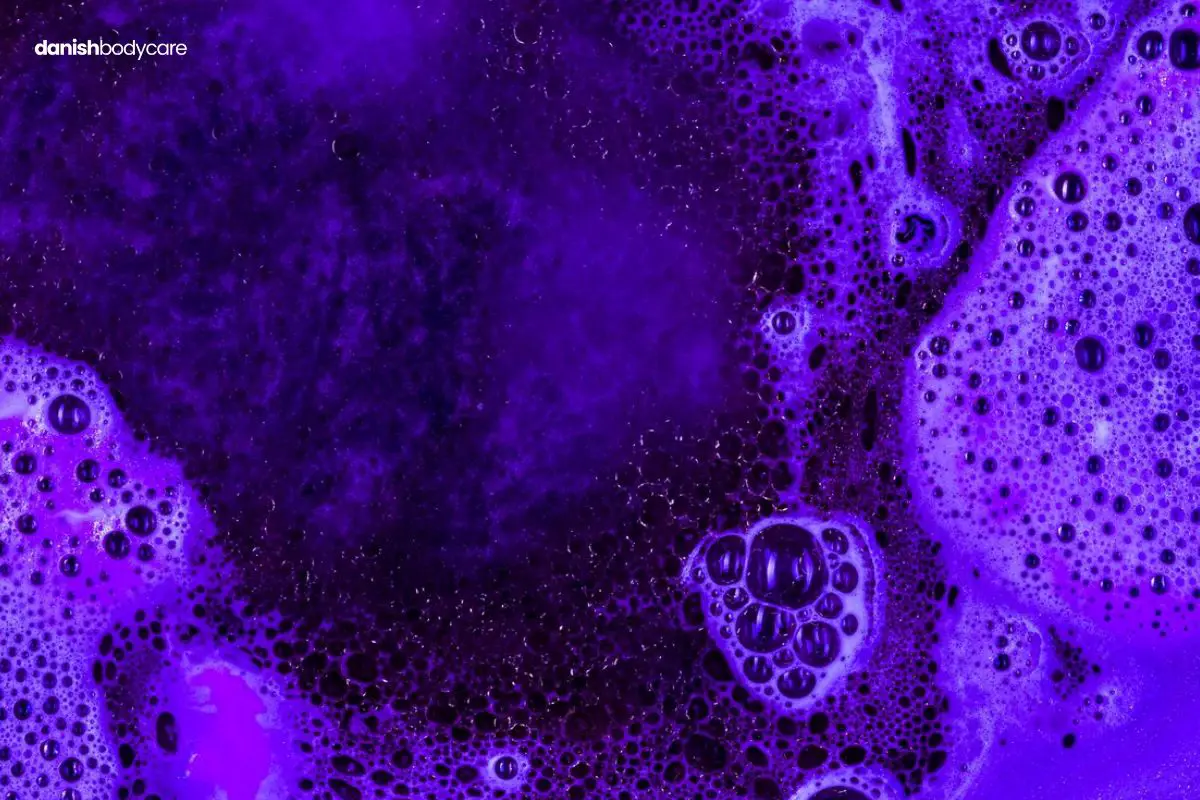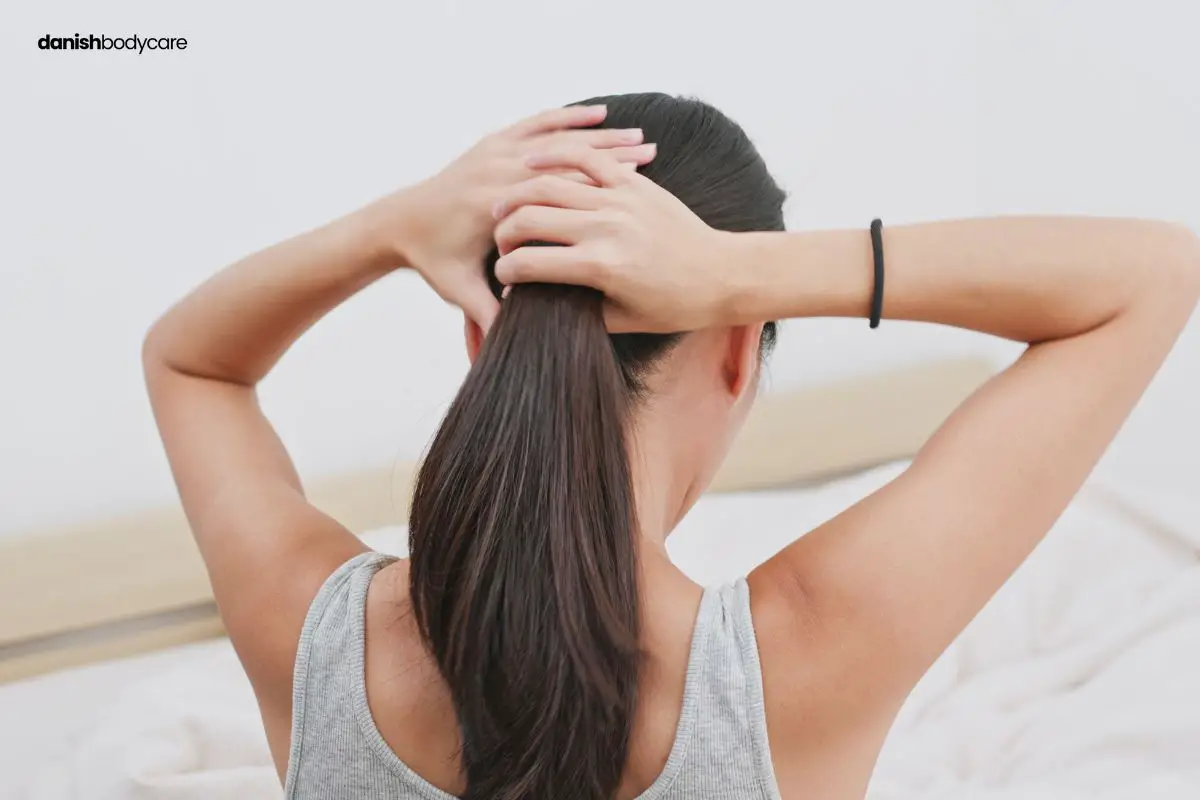Fine high-porosity hair can be a challenge. This hair type absorbs moisture fast but loses it just as fast. It’s prone to dryness, frizz, and damage.
Our aim in this article is to guide you through the unique world of fine high-porosity hair.
We’ll discuss its characteristics, care strategies, and best products. Get ready to transform your hair care routine and boost your hair’s health.
What Is Fine High-Porosity Hair?
Fine hair refers to having thin hair strands, while high porosity refers to the open cuticle structure of the hair.
The cuticles in high-porosity hair allow moisture and nutrients to enter and exit the hair strands with ease.
This differs from low-porosity hair or medium-porosity hair. In these types of hair porosity, the cuticles are more tightly closed.
Due to its structure, high-porosity hair tends to lose more moisture than other hair types.
Does Hair Thickness Affect Porosity?
Your hair’s thickness and porosity go hand-in-hand. Fine hair has a smaller diameter than coarse hair, making it more prone to breakage.
High porosity hair has a more open cuticle. This allows it to absorb moisture with ease but also lose it fast.
When your fine hair has high porosity, it becomes even more delicate and needs extra care.
What Are the Characteristics of Fine High Porosity Hair?

Here are the 13 main characteristics of fine and high-porosity hair:
- Absorbs moisture fast
- Dries out fast
- Prone to breakage
- Tangles with ease
- Often feels dry to the touch
- May appear dull or lackluster
- Highly sensitive to humidity
- Less elastic and more fragile
- Often frizzy
- Sinks fast in a porosity test
- Absorbs products fast, may feel weighed down
- Prone to damage from heat and chemical processing
- Can look thin or sparse due to the fine texture
1. Absorbs Moisture Fast
Your fine high porosity hair has an open cuticle structure that allows it to absorb moisture fast.
This means your hair can soak up water, conditioners, and other hair products with ease.
2. Dries out Fast
Due to its ability to absorb moisture fast, fine high-porosity hair also dries out quite fast.
This means your hair may go from wet to dry in a short amount of time, which can leave it more vulnerable to breakage and damage.
3. Prone to Breakage
Fine high porosity hair is more fragile and prone to breakage due to its fine texture and porous structure.
Handle your hair and use appropriate care and styling techniques to prevent further damage.
4. Tangles with Ease
Your hair tangles with ease because the raised cuticles can catch on each other. This causes knots.
Detangle your hair with caution, using a wide-tooth comb or fingers, to avoid causing breakage.
5. Often Feels Dry to the Touch
Even after applying moisturizing products, fine high porosity hair may still feel dry since it loses moisture fast.
Use heavier, moisture-retaining products to combat this dryness.
6. May Appear Dull or Lackluster
The open cuticles of your fine high-porosity hair cause it to look dull or lackluster. This is due to the uneven reflection of light. Using products that seal and smooth the cuticles can help restore shine and vibrancy.
7. Sensitive to Humidity
Your hair can be sensitive to humidity, as it absorbs moisture from the atmosphere. This leads to frizz and swelling of the hair shaft.
8. Less Elastic and More Fragile
Your fine high porosity hair has less elasticity than other hair types, making it more susceptible to snapping and breaking.
9. Often Frizzy
Because your hair absorbs and loses moisture with ease, it can often become frizzy. Using lightweight, anti-frizz products can help control frizz and improve hair manageability.
10. Sinks Fast in a Porosity Test
In a porosity test, fine high-porosity hair will sink fast to the bottom due to its rapid absorption of water.
11. Absorbs Products Fast
Your hair absorbs products almost immediately. While this can be helpful for infusing moisture, it can also lead to buildup when you apply too many products.
12. Prone to Damage from Heat and Chemical Processing
Your hair is more vulnerable to damage from heat styling and chemical processing due to its porous nature and fine texture. Reduce heat usage and stick to less harsh treatments to minimize damage.
13. Can Look Thin or Sparse Due to Fine Texture
The fine texture of your hair may make it appear thin or sparse, even when it’s healthy. This is a characteristic of your hair type and not always indicative of poor hair health.
High-Porosity Hair Types: Thin vs. Coarse vs. Fine
Many people confuse the two due to their similar lightweight feel. They refer to different aspects: ‘thin’ to hair density and ‘fine’ to strand thickness.
Here are some differences worth mentioning when we take about fine high porosity hair:
| Hair type | Characteristics | High porosity care |
|---|---|---|
| Thin high porosity hair | Less dense, struggles to hold styles, can be easily weighed down | Lightweight products that don’t make it limp |
| Coarse high porosity hair | Thick strands, more resilient | Heavier creams and deep conditioning treatments |
| Fine high porosity hair | Smaller diameter strands, prone to breakage | Protein-rich products, but in moderation |
What Causes High Porosity Hair?
High porosity hair occurs when your hair cuticles open and raised. This allows moisture to enter and exit the hair shaft with ease. Here are the causes:
- Genetics
- Chemical treatments
- heat styling
- Environmental factors
Genetics
Some people have high porosity hair from birth, due to their genes.
Chemical treatments
Frequent use of hair color, relaxers, or perms can damage your hair cuticles. This leads to high porosity.
Heat styling
Hot tools like flat irons and curling wands can cause heat damage. This affects the hair cuticles.
Environmental factors
Too much sun exposure, pollution, or harsh weather can also contribute to high porosity hair.
Test Yourself for High Porosity Hair

You can test for your hair porosity in multiple ways:
- Float test
- Spray bottle test
- Slip and slide test
You can also try out our hair porosity quiz.
Float Test
One simple test you can do at home to check your hair’s porosity is the float test. Here’s what you need to do:
- Get a strand of your clean, dry hair.
- Fill a clear glass with water.
- Place the hair strand in the glass of water.
- Observe the hair strand for a few minutes.
If your hair floats, it means your hair cuticles are sealed and you have low-porosity hair.
If it sinks, it means your hair cuticles are open. This indicates that you have high porosity hair.
Spray Bottle Test
Another test you can do to check the porosity of your hair is the spray bottle test. To perform this test:
- Fill a spray bottle with water.
- Mist a section of your dry hair with the water.
- Observe how your hair reacts to the water.
For high porosity hair, the water will absorb fast. Low-porosity hair will take longer to absorb the water or may even repel the water, causing it to form beads on the hair surface.
Slip and Slide Test
The slip-and-slide test can give you an idea of the condition of your hair cuticle. To perform this test:
- Take a strand of your hair.
- Pinch it between your thumb and index finger.
- Slide your fingers up the hair strand, from the tip to the root.
If you feel a lot of bumps or roughness, this indicates that your hair cuticles are raised and you have high porosity hair. Smooth strands are a sign of low porosity hair.
13 Ways To Care for Fine High-Porosity Hair
Fine high-porosity hair needs special care to keep healthy. Here are 13 ways to care for it:
- Use moisturizing products.
- Apply protein treatments.
- Avoid heat-styling tools.
- Use a microfiber towel for drying.
- Opt for deep conditioning regularly.
- Seal with light oils.
- Use a satin pillowcase for sleeping.
- Regularly trim split ends.
- Maintain a healthy diet.
- Stay hydrated.
- Limit chemical treatments.
- Protect hair from environmental damage.
- Adopt low-manipulation hairstyles
1. Use Moisturizing Products
Choose shampoos and conditioners free from sulfates and rich in moisturizing ingredients.
Opt for a leave-in conditioner to provide extra hydration and retention throughout the day.
2. Apply Protein Treatments
Fine hair can enjoy regular protein treatments to strengthen the hair shaft and prevent breakage.
Don’t use these treatments often, as excessive protein can make your hair brittle. Not more than once every 4-6 weeks.
3. Avoid Heat Styling Tools
Limit the use of heat styling tools:
- Curling irons
- Straighteners
- Blow dryers
They can cause further damage to fine high porosity hair. When you need to use them, apply a heat protectant to cut the damage.
4. Use a Microfiber Towel for Drying
When drying your hair, use a microfiber towel or t-shirt to reduce frizz and damage caused by rough towels. Squeeze the excess water from your hair, avoiding rubbing or wringing.
5. Opt for Regular Deep Conditioning
Deep conditioning treatments can help retain moisture, keeping your hair healthy and hydrated. Incorporate these treatments into your routine at least once a week.
6. Seal with Light Oils
To lock in the moisture, use light oils:
- Grapeseed
- Sweet almond
- Jojoba oil
Use these after applying your leave-in conditioner or moisturizer. These oils won’t weigh down your fine hair and will help seal in hydration.
7. Use a Satin Pillowcase for Sleeping
Switch to a satin pillowcase to reduce friction, frizz, and potential damage to your hair while you sleep.
This simple change makes a significant difference in maintaining your fine high porosity hair’s health.
8. Regularly Trim Split Ends
Schedule regular trims to remove split ends. this reduces breakage and encourages healthier hair growth.
Aim to trim your hair every 6-8 weeks.
9. Maintain a Healthy Diet
What you consume affects your hair health.
Eating a balanced diet rich in nutrients, vitamins, and proteins can improve your fine high porosity hair’s condition.
10. Stay Hydrated
Drinking enough water each day helps maintain overall health. This includes the condition of your hair.
Staying hydrated can make your hair appear shinier and more vibrant.
11. Limit Chemical Treatments
Coloring, bleaching, and relaxing your hair can cause further damage to fine high porosity hair.
Limit the use of these treatments to cut damage when possible.
12. Protect Hair from Environmental Damage
Protect your hair from sun, wind, and pollution. Do this by wearing hats, scarves or using UV protection hair sprays.
These barriers can help prevent damage from environmental factors.
13. Adopt Low Manipulation Hairstyles
Choose hairstyles that need minimal manipulation. This reduces stress and breakage on your fine high porosity hair. Examples include:
- Braids
- Twists
- Buns
- Avoid tight hairstyles that can cause extra tension and damage.
Products for Fine High Porosity Hair
Best Oils
Oils are essential for maintaining the health and moisture of your fine high porosity hair. Here are some oils that work well for fine high-porosity hair:
- Argan oil
- Coconut oil
- Olive oil
- Grapeseed oil
- Jojoba oil
- Shea butter
Conditioners for High Porosity Hair
Conditioning your fine high porosity hair moisturizes it and prevent breakage.
Look for conditioners that contain some of the above-mentioned oils, such as argan oil or coconut oil.
Use a leave-in conditiore to help lock in moisture and manage frizz.
Styling Products
To style your fine high porosity hair, choose products that provide hold without weighing your hair down. Avoid products that are too heavy, such as thick creams or gels.
Instead, opt for lightweight styling products like mousses or foams. They provide lasting hold and control without adding excess weight to your hair.
DIY Treatments
Incorporating home remedies into your hair care routine can be a cost-effective. Some popular DIY treatments include:
| Ingredient | Benefits |
|---|---|
| Honey | Acts as a natural humectant, helping your hair retain moisture. |
| Apple cider vinegar | Revives your hair’s shine and balances its pH level. |
| Manuka honey | Combines the benefits of honey with antibacterial properties for a healthy scalp. |
Frequently Asked Questions
Can I have fine hair but still have low porosity?
Yes, you can have fine hair with low porosity. Hair porosity is the effect of the structure of the hair cuticles. Fine hair refers to the thickness of individual hair strands. These two traits can exist independently. So, if you have fine hair, it’s possible to have low, medium, or high porosity.
Is fine high porosity hair more common in certain hair types?
Fine high porosity hair is not restricted to a specific hair type. Factors such as genetics, age, and chemical treatments can contribute to high porosity hair.
Some hair types, like coiled curls, can be more prone to damage and breakage. This can lead to high porosity over time.
How can diet and lifestyle impact fine high porosity hair?
Diet and lifestyle can impact the health of your fine high porosity hair. Consuming a balanced diet rich in vitamins, minerals, and proteins can help strengthen and nourish your hair from within. Include foods such as leafy greens, whole grains, lean proteins, and healthy fats in your diet for optimal hair health.








